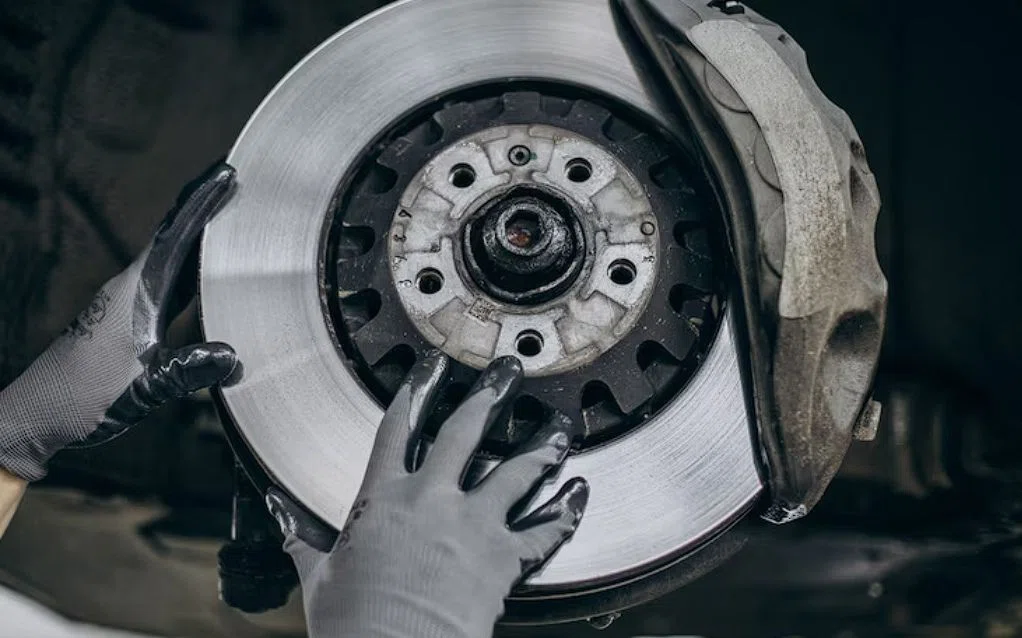
Car Brake Troubleshooter: Solution and Cost
Learn how to fix problems with your car's braking system. Bleed the system to get rid of air and improve brake performance. Understand the mechanism of the brake system and the process of braking. Return to the service center for professional service and estimate the cost of the repair. Ensure the safety and reliability of your vehicle.
Content
- When do I need an automobile brake system?
- How does the mechanism of the braking system work?
- The double ring braking process can be divided into 6 steps:
- The following installation errors must be eliminated in the brake system
- How to perform the procedure of pumping the brake system with installed anti-lock brakes (ABS) system
- Cost of brake pumping in the service
- Frequently asked questions
- How often should brake fluid be changed?
- What signs indicate brake pad wear?
- Can I service my brake system myself?
- What are the most durable materials for brake pads?
- Does the quality of the brake fluid affect the performance of the brake system?
Sometimes air is encountered when braking the vehicle. The parking brake pedal is loose, so the brake pedal must be depressed several times before the vehicle warms up. This is a dangerous situation while driving: it is not working fast, so you cannot stop suddenly.
To solve this problem, you need to reduce the power of the brake system - this is how you can clear all the air from the system. Let's take a look at how to reduce the speed, as well as determine the cost of both of our options.Go through the procedure at home and return to your car's service center.
When will I need my car brake system pumped?
If you need to pump your brake system, there are certain situations in which you can do so. Maintenance of the system and removal of related obstacles are mandatory steps. In order to keep the parking system running smoothly and eliminate defects, you need to follow the vehicle manufacturer's recommendations.
If the parking mode is impaired, the brake fluid will be replaced. This is where the locking fluid concentrates, causing it to become less effective. Most manufacturers recommend changing the fluid every 30,000-60,000 kilometers of mileage or every 2 years. Pumps with air-cooled systems are also used to pump fluids.
If your vehicle has a brake master cylinder or vacuum booster being repaired, you may benefit from a brake system pumping. During the repair process, air can get trapped, reducing the effectiveness of the brakes. The system must be restored to proper function and functionality to ensure proper operation.
Another thing to look for is a soft pedal, which indicates that you need to turn the brake system.1 If the brake pedal is too soft, it could be due to a brake system malfunction or other problems. If this is the case, you should consult a professional or act with restraint if you have the skills and abilities.
It is important to remember that pumping brakes requires certain skills and attention. If you are confident in your abilities or have no experience in performing such work, it is recommended to contact a car service specialist for professional and safe operation.
How does the braking system mechanism work?
In order to perform the braking process of your car yourself, you first need to think about the type of braking system that will be used in your car. Usually, a dual-circuit braking system, also called diagonal braking system, is installed on your car. However, to specify the type of system, you will need to refer to the information in your vehicle's owner's manual.
If your vehicle has a dual road system, the entire welding process should be done in a "letter u" pattern. The scheme included the brakes of the right rear wheel, left rear wheel, right front wheel, and left front wheel one at a time. This method of painting the brake system is standard on XC2107 and other brands of cars.
In this case, if your car is equipped with axle or other similar systems, contact a service center for professional assistance. Modern cars are equipped with a brake force distribution system, which can be harmful. In addition, there is a risk of air sucking out of the brake system, which can lead to even more serious problems.
You will need the following tools and materials to build the locking system:
- A clean 5-liter tank, such as a plastic bottle, can be used underwater. At the same time, the amount of liquid in the reservoir increases.
- Rubber hose. To track the movement of liquid in the air, you can use a transparent hose. However, if you don't have a transparent hose, you can use a regular hose.
- Auxiliary - pedals that regulate the fluid flow.
The double ring braking process can be divided into 6 steps:
- Reinstall the vehicle and lower the wheel to gain access to the pump fitting.
- Install the clear hose from the pump gun. Prepare the clear fluid reservoir in advance with the hose.
- Ask your teammates to depress the brake pedal 3-4 times, then drain the fluid. For best results, vary the length of your sentences: sometimes you use complex, long sentences, sometimes you leave them short. If you are doing this process without assistance, depress the gas pedal. To use the vacuum pump, you don't need to press the pedal.The device operates by itself.
- For the correct procedure, you need to do the following: first, carefully pour the liquid into this container. Wait 2-3 seconds to make sure that the liquid is completely absorbed. Then, rub your hands together and have a helper press the pedal. The fluid level in the reservoir must be monitored at all times so that the safety system cannot return to a braking condition where there is a possibility of air ingress. Due to insufficient fluid volume, it was necessary to hold the fluid to an impossible level.
- Repeat the previous 2 steps until the container is filled with clean liquid air entering the container from the hose.
- Once the brake system has been perfected, the gun must be refinished.
- This procedure must be repeated in each cycle.
The following installation errors must be eliminated in the brake system
- Be careful that the fluid flows through the nozzle so that it does not get on the disk or machine. This is caused by chemical corrosion and can easily coat the surface of the damage.
- Remember to put the hat back in place after use. Another problem is crusting on the soil.
- All in all, it is very large. The dough comes out light and soft. If you are spreading misunderstandings, MAD-40 general grease or similar products work well.
- The water level in the water reservoir is monitored during installation. When the fluid runs out, the brake system can start to work.
- Pay attention to the fluid level in the reservoir while using the fitting. If the fluid runs out, the brake system will again contain air. In this case, re-pumping will be required.
How to perform the procedure for pumping the brake system with the Anti-lock Brake System (ABS) installed
Pumping the brake system with an anti-lock braking system (ABS) installed can be performed without the need to disable the system itself. However, sometimes car owners complain that they are unable to fully bleed the system when the ABS is on. In order to avoid possible problems, some people recommend disabling the ABS by removing the fuse beforehand.
To perform the brake system bleeding procedure in a vehicle with ABS, follow the instructions below:
- Preparation: make sure the vehicle is parked on a level surface and turned off. Open the hood and locate the brake master cylinder. It is usually located at the rear of the engine, closer to the driver's compartment.
- Disabling the ABS (optional): if you choose to disable the ABS before pumping, you will need to locate the fuse responsible for the ABS system in the vehicle's fuse box. Check your owner's manual or fuse diagram to pinpoint the correct fuse. It should be noted that disabling the ABS may require tampering with the vehicle's electrical system and can be a complicated process.
- Prepare your tools: to pump the brake system, you will need the following tools: a wrench to open the master cylinder reservoir, a set of wrenches, and clear flexible tubing.
- Pumping the brakes: start with the rear right brake caliper. Locate the stud on the caliper coming from it. Place a wrench on the stud and place the flexible tubing on the end of the stud. Place the other end of the tubing into a clear plastic bottle filled with a small amount of brake fluid. Make sure the end of the tubing is completely submerged in the fluid to prevent air from entering the system.
- Pumping procedure: have a helper press and hold the brake pedal until the brake pedal is fully depressed. Turn the wrench in a counterclockwise direction to open the stud. When you see a trickle of brake fluid, close the stud by turning the wrench clockwise. Repeat this procedure several times until there is no more air coming out of the tube and clear fluid with no bubbles.
- Moving on to the other brakes: proceed to pump the brakes on the other wheels in the following order: rear left, front right and finally front left. Remember to check the brake fluid level in the master cylinder reservoir and refill as needed.
- Completing the procedure: after you have pumped all the brakes and made sure there is no air in the system, make sure all studs are securely closed. If you disconnected the ABS, reset the fuse or reconnect the system according to the vehicle owner's manual.
It is important to note that pumping an ABS brake system can be a complex task and requires some skill. If you are unsure of your abilities or experience, it is recommended that you contact a professional auto mechanic or service center to perform this procedure.
Cost of brake pumping in the service
The cost of brake system pumping can vary depending on various factors, including city, level of the technical center and qualification of the specialist. The average price for such a procedure ranges from approximately GEL 63 to 95. However, if you go to a private specialist, there is a possibility to save from 15 to 30 Georgian GEL.
When it comes to brake pumping, it is important to consider several aspects that can affect the cost of this service in services. One such factor is the city where the tech center is located. In large metropolitan areas where the demand for automotive services is higher, the prices for brake pumping may be slightly higher than in smaller cities or towns.
Another factor that affects the cost is the level of the tech center. There are services that specialize in the repair and maintenance of certain brands of cars or with a certain level of expertise. The higher the level of the technical center and its reputation, the more likely that the cost of pumping the brake system will be higher, as you pay for experience and quality of services provided.
In addition, the experience and qualifications of the technician can also affect the price. If you have the opportunity to choose between different specialists, it is worth paying attention to their ratings and reviews from other customers. More experienced and highly qualified professionals are likely to charge more for their services.
However, if you decide to go for a private specialist, there is an opportunity to save some amount of money. Private specialists usually do not incur additional costs associated with maintaining a tech center, so they can offer more attractive prices. It is important to choose proven and reliable private specialists to be sure of the quality and safety of the work performed.
In addition to the main factors affecting the cost of pumping the brake system, there are other factors that can affect the final price. Some services may offer additional services as part of the brake pumping procedure, such as checking and replacing brake fluid, inspecting brake disks and pads, cleaning or replacing them if necessary. These additional services can affect the overall cost and quality of the work, so it is always worth checking their availability and cost with your chosen service.
In the end, the cost of pumping the brake system in services depends on several factors, including the city, the level of the technical center and the experience of the specialist. It is important to do some research and choose a reliable service or a trusted private specialist to ensure quality service at an adequate price.
Frequently Asked Questions
1️⃣ How often should brake fluid be changed?
It is recommended to change the brake fluid every 1-2 years or as recommended by the vehicle manufacturer.
2️⃣ What signs indicate brake pad wear?
If there is squeaking, vibration or increased braking distance, it is recommended to check the condition of the brake pads and replace them if necessary.
3️⃣ Can I service my brake system myself?
For complex procedures, it is recommended that you call in professionals, but you can perform regular inspections, cleaning and replacing brake pads as needed.
4️⃣ What are the most durable materials for brake pads?
Ceramic and semi-metallic pads have good wear resistance and heat distribution, making them durable and effective.
5️⃣ Does the quality of brake fluid affect brake system performance?
Yes, using a high quality brake fluid with the right characteristics helps ensure reliable brake performance and prevents corrosion.







4 comments
Log in to leave a comment